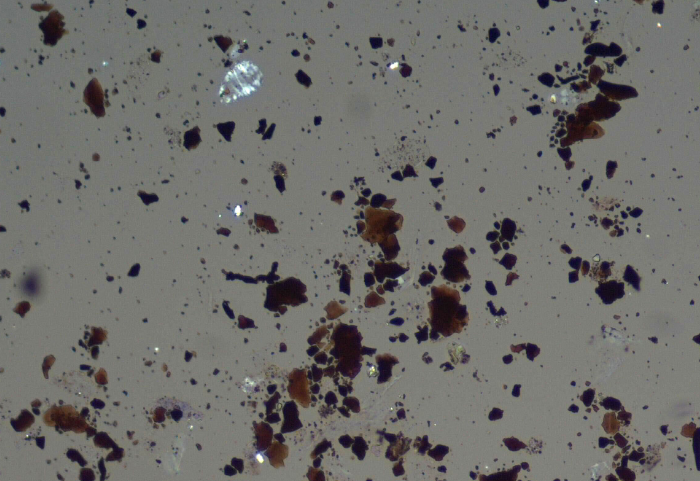Expand Your Knowledge
Our resource center archives our case studies, published articles, blogs, webinars, and image galleries. Discover ways microscopy has made a meaningful impact.

Industrial hygiene broadly refers to the science of protecting the health and safety of people in the workplace and community. Industrial hygienists (IHs) are scientists and engineers who apply their expertise to help organizations comply with industrial regulations and occupational health standards set by regulatory bodies. The field encompasses various categories focused on identifying, analyzing, and controlling workplace conditions to prevent hazardous environments. These categories include chemical hazards, biological hazards, physical hazards, ergonomic hazards, and air contaminants.
MVA Scientific Consultants helps industrial hygienists by using analytical microscopy and spectroscopy to test dust and debris containing unknown particles. Traditional industrial hygiene test methods like extraction/digestion followed by chromatography or elemental analysis do not usually give meaningful results when applied to the analysis of particles. Our lab reports provide qualitative and semi-quantitative information such as composition of materials and general population of the constituents.
Some particles are so small that they can pass through the nose’s filtration system and reach the lungs. Microscopy allows us to view objects that cannot be seen with the naked eye. The advantage of using microscopy for debris analysis is that it gives morphological, chemical, and molecular information about the particle in its unaltered state. Particles are found in homes and workplaces and may be harmless, a nuisance, or hazardous. They might be biological, chemical or physical agents that could have a serious effect on people’s health and wellbeing. It is important to identify those particles to know the potential risk they present. Dust may contain microbes or fungi (mold) that release toxins. It may also contain chemicals such as pesticides or dyes that can cause cancer. Dust or debris may contain particles of material such as asbestos, silica, iron, and coal.
We can identify skin cells, soot, pollen, fungal material, animal hairs, soil minerals, construction debris, fiberglass, clothing fibers, insect parts, rubber and polymer fragments and many other components of dust and debris. Identification of the individual particles present in dust or debris can help the industrial hygienist identify the source and develop a plan to minimize or eliminate exposure to dangerous contaminants.
For dust issues in the home, we recommend contacting a local Certified Industrial Hygienist (CIH). They can often identify your problem, collect a sample and send it to MVA Scientific Consultants if testing is required. To find a CIH, visit the American Industrial Hygiene Association (AIHA) website. Click here for the directory.
If you have questions regarding dust and debris analysis, please call us at 770-662-8509 or email info@mvainc.com.